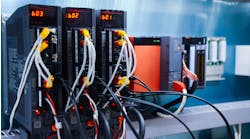A typical plant incorporates instruments from a variety of vendors based upon the site preference for a specific technology such as flow, level, pressure, temperature, analysis and so on. As long as the manufacturer provides the tools necessary for commissioning and diagnostic evaluation, for examples DTMs or DDs, the instrument can be integrated into the automation system.
However, many maintenance technicians and plant engineers view system integration as a means to interconnect various automation systems and software platforms via digital data links, with instrumentation often not considered a critical component. Many think instruments simply need to support the correct communication protocol employed by the unit or site so the automation system can receive the primary process variable output as well as alarms or warnings.
The problem with this definition of system integration relative to process instrumentation is that it no longer addresses the requirements of a modern process facility, specifically the trend towards the industrial internet of things (IIoT) and cloud-based analytics.
Read the rest of this article from our sister publication Plant Services.
